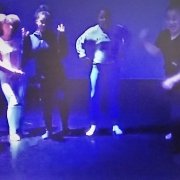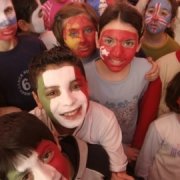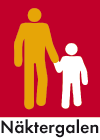Interkulturelles Mentoring für Schulen (Intercultural mentoring for schools
Excerpt
Support for pupils who had experienced migration or flight and support for teachers in classroom who are being characterized by manifold facets of multi-culturalism – through role-modelling of university students, sharing of experiences, individual empowerment and strengthening of self-esteem.
Narrative, origins and objectives of the initiative
What kind of project is this? Please give a short description (summary) of it.
University students with personal experience in migration or flight visit classes at schools as mentors once in a week and take part in the lessons in accordance with the teacher. They interact with the pupils, support them in their learning and, in case of language difficulties, support them to perform better in school. Moreover, they serve as role models, caregivers and contact persons because they represent a positive example of the value of education. Due to their own experiences and language, they are the best equipped to support migrant school students - whether in language support or enhancement of self-esteem. Moreover, they can have an important role in working and communication with parents, e.g. for preparing appointments or parent conference days.
Please tell us why, in general, this project is considered a successful one?
The mentors serve as role models, caregivers and contact persons for pupils, teachers and parents. They represent positive examples of multilingualism and “positive examples of integration” as requested by policy and popular media likewise. They provide examples of successful pathways and alternative concepts of life that are beneficial for children from educationally disadvantaged backgrounds. The comprehension of revealed ever-recurring patterns in education faced in school by pupils with migration background provides the opportunity to arbitrate between parents, school representatives and pupils.
And why would you consider it a grass-roots initiative?
The program was initiated by a department lecturer and chairperson of the Alumni Association together with a student of Turkish origin as a direct response to demands in migration engagement that was reported from and visible in schools.
What challenges needed to be solved in this project?
xxx
Is this initiative based on any particular theoretical framework? Which one?
The project pursues an “Anti-bias approach” (prejudice-conscious education and pedagogy), skills-oriented pedagogy and migration pedagogy: cultural diversity made perceivable as being normal in classrooms, experiencing of lived multilingualism, acknowledgement of competences, setting examples of positive identity models.
(Appendix) Is your intervention standing on its own or is it a part of a bigger and more holistic approach?
Please describe the group(s) intended as beneficiaries of this initiative
Why has this group (have these groups) been chosen?
Pupils who have experienced migration or flight in their biographies are faced with difficult assumptions in school education – our approach is to provide them with support that includes sharing of their own experiences with a mentor.
Student mentors who have also personally experienced migration or flight can offer appreciative and esteeming recognition of their competencies and knowledge gained from their own experience through working in the project.
Could you please tell us something about the relative size of the (of each) target group, within the school/university population, region and/or country?
Historically, Vienna has always had a relatively high share of the population with a migration background. Currently (2017) approx. 44% of the Vienna population (approx. 1,85 Million in total) have a history of migration in the 1st or 2nd generation, which means that both parents were born outside Austria and the individuals were either born inside or outside Austria.
http://www.statistik.at/web_de/statistiken/menschen_und_gesellschaft/bevoelkerung/bevoelkerungsstruktur/bevoelkerung_nach_migrationshintergrund/index.html
With respect to age groups, between 60% and 70% of the total population between 5 and 19 years old have a background of migration. In the age group 0 - 4 years old, this proportion equals 75% (1st and 2nd generation).
Since 2015, approx. 160.000 were seeking asylum in Austria, of which between 37% and 46% were granted asylum status - with the biggest proportion of these (approx. 33%) settled in Vienna. By mid 2018 approx. 18.500 asylum seekers are still under state care with unclear asylum status, of which 28% are of minor age.
http://fluechtlinge.wien/downloads/FSW-Fakten_Mai2018.pdf
Which social characteristics are taken into account and what is the geographical area covered?
All of our mentors have a migration or refugee background and are currently students or have already graduated. We are therefore working with a group of individuals who are underrepresented in society at large as well as in the university system.
The mentors were either born in Austria, to first generation immigrants, or were are born abroad and moved to Austria to continue their education. Our mentors who have refugee/asylum status have all worked in the education system in their respective home countries and hold university degrees.
Our mentors speak 19 different languages, ranging from Arabic to Pashto. Currently, 35 mentors are active in 25 schools and reach approximately 25 beneficiaries per school class.
On which level is the project implemented?
The implementation is happening mainly on the compulsory school level in Vienna an St. Pölten (Lower Austria). Most of the schools we work with are on the primary and secondary level (“Volkschulen” and “Neue Mittelschulen”) with a few exceptions. Over the course of the project we have worked with Gymnasiums and higher secondary vocational schools of economics (Gymnasiums, HAK).
Please describe the political and socio-economic factors that you believe have been important enablers for your initiative
Did the initiative have political support?
Financial support is provided by the Ministry for Foreign Affairs (support scheme for integration projects) and from the Büro für Diversität in St. Pölten (on city level, municipality of St. Pölten – diversity office).
How did it fit with local, regional or national policies?
Integration in/through education is in line with governmental policies on regional and national levels.
Who are the stakeholders supporting the initiative?
BMEIA – Ministry for Foreign Affairs; Büro für Diversität St. Pölten (Municipality of St. Pölten – diversity office)
Are there particular demographic changes present that are influencing the project?
A rising numbers of pupils with experiences in migration, flight and asylum; an increasing demand of mentors fluent in Arabic.
What is the institutional strategy and culture of the (educational) organization?
Our aim is to acknowledge cultural diversity as valuable and “normal” and to establish structures that provide room for such pluralism in culture and language.
To what extent does the initiative have an influence on institutional policy (or potential influence) of the (educational) organization?
This is a small-scale project with substantial output for individual pupils and teachers, but little impact on the education policy level at large.
(Appendix) Is there public support for your initiative and the issue it addresses?
(Appendix) What other factors do you think have been important for the success of this initiative?
Please describe the overall initiative design and the methods and tools used to reach the goals
Please describe the specific activities carried out.
University students with personal experience in migration or flight visit school classes as mentors once in a week and join the lessons in accordance with the teacher. They interact with the pupils, support them in their learning and, in case of language difficulties, help them to perform better in school. Moreover, they serve as role models, care givers and contact persons because they represent positive examples of the value of education. Due to their own experiences and language, they can support migrant school students the best they possibly can – may that be in language support or enhancement of self-esteem. Moreover, they can have an important role in working and communication with parents, e.g. for preparing appointments or parent conference days.
What were the key roles (teacher, student, management team etc.) within the project?
Being a role-model for mentors, sharing experiences, enhancing self-efficacy and self-esteem – particularly with respect to their cultural and language background and context.
What ideas, tools, theories, models, methodology (etc.) have been used to reach the goals?
The activities of mentors are continuously evaluated by means of a standardised template that is issued and analysed by the project team quarterly. Moreover, special consideration is given to further qualification and know-how that will be obtained by the mentors through their project involvement. Team meetings are partly arranged with/by external experts, e.g. concerning prevention of violence, conflict resolution in classrooms, inter-cultural learning material for classroom teaching or similar. Monthly team meetings allow for reflection as well as for dealing with various aspects of inter-cultural education in small groups in order to identify general challenges and option for solution. Specific problems are dealt with in bilateral conversation with the project coordinators.
What are the final revenues of the project?
Please describe if your project ensured its sustainability
If so, how did you ensure the short-term impact of the project?
Mentors join a school class for at least one full school year in order to allow for stable relations.
And how did you ensure the long-term impact of the project?
Some of the mentors have been working with a particular class for 4 years now and the impact this has on the pupils is lasting.
Has your project been replicated elsewhere?
Cooperation with “Z.I.M.T – Zentrum für Interreligiöses Lernen, Migrationspädagogik und Mehrsprachigkeit an der PH OÖ” (Z.I.M.T, the Centre for Inter-religious Learning, Migration Pedagogy and Multilingualism at the Private University of Education, Diocese of Linz)
Please tell us about the resources used in this initiative
What was the budget for the initiative?
25.000 EUR in 2018
How much did the initiative depend on volunteers?
Most parts of the activities are on a voluntary basis; mentors only receive a minor remuneration.
How were the costs perceived by the public/the sector/other stakeholders?
To what extent did the initiative achieve its objectives?
Please describe the evidence to support the success of your initiative.
The impact of mentoring is difficult to assess in general. However, there are quotes of pupils and teachers revealing that this kind of support is highly valuated.
Quote from a female pupil in a primary school:
“When you [i.e. the mentor] are around in class, I can do anything better and understand better. Why don’t you come every day?”
Feedback of a teacher (lower secondary) by email:
“Dear Ms Binder, I just wanted to let you know how valuable the two mentors P. and F. are for us! The two are a real enrichment for everyday school life and are really committed to what they do. F. even participated in pupil-parent-teacher conferences in order to translate for A.’s mother. P. is a sunshine and does A. [i.e. the mentee] really good. Thanks again for the profound selection [of the mentors].”
Did the intervention lead to any unintended (positive) outcomes?
The initial focus of the project was on pupils, teachers and parents. However, the impact on mentors became more and more evident during the project lifespan: enhancement of self-esteem through valuation of experiences in migration, practical experience in working with children and young people, learning from pedagogical experts and practitioners, occupational orientation.
In particular, for mentors who were refugees: stepping out of a presumed role as mere recipient of social and asylum welfare towards having an active role in shaping an individual life and the opportunities in it, improvement of language skills, making connections and networking in the Austrian society, establishing relations with the university and experiencing integration.
What indicators (quantitative and qualitative) have you measured to demonstrate success?
Mentors prepare reports and personal reflections that are analysed by the project coordinators. Moreover, interviews with teachers are conducted and an undergraduate thesis in social-service work was prepared about the perceptions of pupils.
(Appendix) How did you evaluate/monitor this intervention?
Quantitativ - based on key criteria:
Total of beneficiaries: 1.326
beneficiaries, female: 795
beneficiaries, male: 531
beneficiaries under 18: 1.134 (pupils)
beneficiaries over 18: 192 (teachers, parents)
number of school visits:
Awards received; 6
(2014-2017: Wiener Mut, Ö1 Hörsaal, Löwenherz, Sustainability, Ort des Respekts, Sozialmarie)
Number of publications: 5
(monographies, articles, reports)
Qualitative - based on feedback and personal reflections:
Quotes of school staff about the mentors:
“I've had plenty of fun with them [i.e. the mentors]. They both spoke the “language of the children”. That is rarely so, very rarely. In that direct way. The children were really happy as soon as they got sight of them [i.e. the mentors]. I am really excited.” (Teacher, Vienna)
“A girl told me, that I. [i.e. the mentor] is her model. I then asked why. [And she said] You know, he switches between languages. He speaks that way and then the other word is different again and I want to able to do that also.” (Teacher, Vienna)
“She [i.e. the mentor] helped a girl to write a really good essay, a presentation of herself for a business school. This essay was really good and the girl didn’t have any clue how to do so before. She [i.e. the mentor] really helped with words and deeds.” (Teacher, Vienna)
“It [i.e. the program] was really well received. We [i.e. teachers with parents] could have talked and talked and talked […] but to say crystal-clear in their own language: That’s a fact – then it is much more acceptable for the parents [i.e. if in mother tongue by the mentors]. We would have beat around the bush for much longer.” (Teacher, Vienna)
“What we now have in the classroom is something a wished every class would have. Simply enough, there is somebody else who has knowledge and social insight and who is just supportive – for the children, for the teacher, for anybody.” (Teacher, Vienna)
Quotes by mentors:
“The pupils are much more relaxed when they ask me [i.e. instead of the teacher] or when we work together on something. They are not afraid of making anything wrong” (Mentor, Vienna)
“H. [i.e. a male pupil] was amazed in the first instance, when I suddenly talked Arabic with him. He was even making jokes about my accent. But now we have a trustful relation. He even tells me how much he misses his mother and how much his father is struggling and he asks about my family.” (Mentor, Vienna)

 Interkulturelles Mentoring
Interkulturelles Mentoring Copyright by Mili Flener
Copyright by Mili Flener





